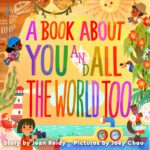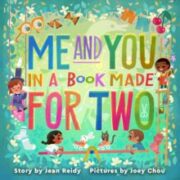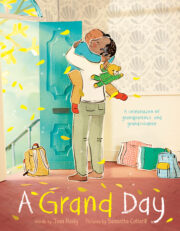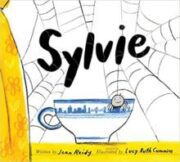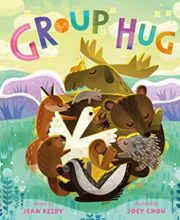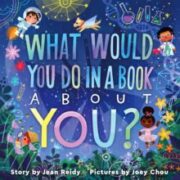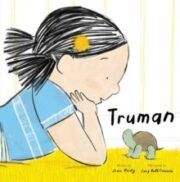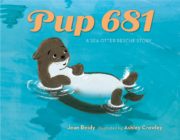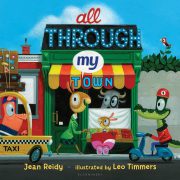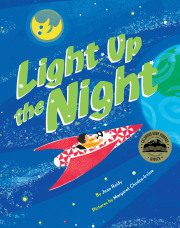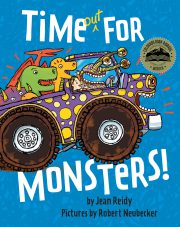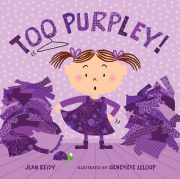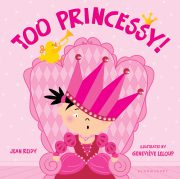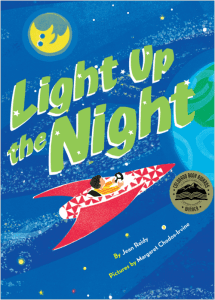 In my picture book LIGHT UP THE NIGHT, a child uses his imagination and his blanket to travel through his universe before bed. The child’s blanket, white and red, represents the themes of the book – security and a sense of place. By zeroing in on a significant object in their lives, students can explore the IDEA trait of writing.
In my picture book LIGHT UP THE NIGHT, a child uses his imagination and his blanket to travel through his universe before bed. The child’s blanket, white and red, represents the themes of the book – security and a sense of place. By zeroing in on a significant object in their lives, students can explore the IDEA trait of writing.
- Read LIGHT UP THE NIGHT aloud slowly, giving students ample time to explore the illustrations.
- Note the endpapers of the story which mimic the color and pattern of the main character’s blanket.
- Browse the pages again, finding the red and white blanket on every page as the main character ventures through his universe.
- Ask students, “What is the main idea of this story? Is it really about a blanket?” Discuss how a symbol – like the blanket – can stand for a bigger idea. In this story, the bigger ideas or the themes of the book are security, home, and a sense of place. Ask students how the blanket was used to deliver those themes.
- Have students think about their own bedrooms, imagining the many objects they may keep there – on shelves, on their bed, in their closet, etc. Give them at least 5-minutes to tour their rooms slowly in their imaginations. Tell them to close their eyes and to try to see everything, every object.
- Have students zero in on one object that’s significant to them and have them write a brief journal entry describing the object and explaining why that item is significant.
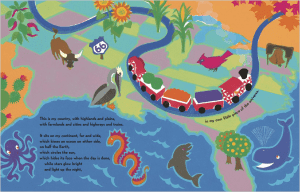
- Then have students list emotions they associate with that object and after each emotion describe why.
- In LIGHT UP THE NIGHT, the main character’s blanket becomes a rocket, spaceship, truck, train, skateboard, etc. Ask students, “If your object came to life or transformed in some way, what would it do?” Then ask them to imagine their object “coming to life” or transforming in such a way that relates to the emotions listed above. For example, if the student is imagining a soccer trophy in her room, maybe the player on the trophy becomes the student, scoring the game winning goal. Or, let’s say the object is a photo of a grandparent. Maybe the student imagines that grandparent being right there with him or taking him on a trip.
- Using the journal en
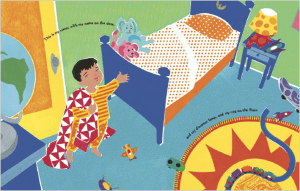 try, the emotion list and the “coming to life” activity, have students try to discover a theme – or bigger idea – tied to their object. It might be friendship or family or other special relationships. It might be fears or anticipation of growing up. It might be security. The list of themes is endless. Explain to students how the object then symbolizes their theme.
try, the emotion list and the “coming to life” activity, have students try to discover a theme – or bigger idea – tied to their object. It might be friendship or family or other special relationships. It might be fears or anticipation of growing up. It might be security. The list of themes is endless. Explain to students how the object then symbolizes their theme. - Create a bulletin board with photos of all the student’s objects captioned with the “big ideas” associated with them.
This exercise fulfills learning standards for Writing and Literacy.
In my next Tuesdays for Teachers post, we’ll continue using this object study and LIGHT UP THE NIGHT as a mentor text for Word Choice.
Teachers! LIGHT UP THE NIGHT is now available at a special rate through the Scholastic Teacher Store! Order your copy right here: http://shop.scholastic.com/shop/en/teacherstore/Light-Up-the-Night.


